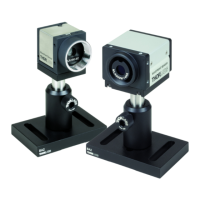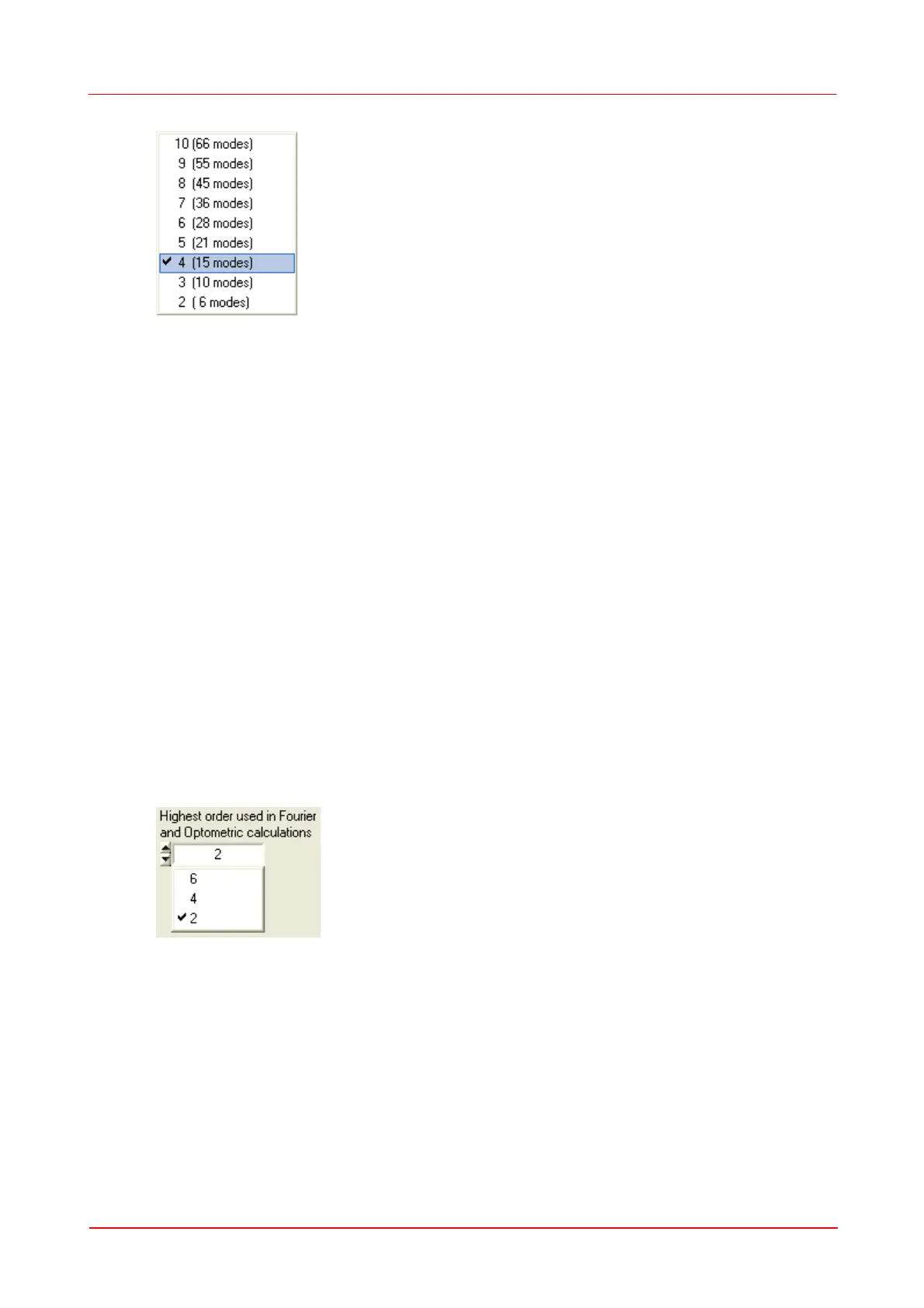© 2007-2012 Thorlabs GmbH
84 WFS Series
Available settings are:
According to the well known set of Zernike polynoms, the highest radial order (r
n
)
determines the number of Zernike modes that contain this or lower potencies n of the
pupil radius r.
By default, the highest Zernike order is set to n = 4 which implies a total number of
15 Zernike modes. The resulting coefficients are displayed in bar graph chart on the
Zernike Coefficients panel.
The higher the Zernike order the more Zernike modes are used to reconstruct the
measured wavefront shape. The best wavefront reconstruction is obtained using the
highest Zernike order 10 utilizing a total number of 66 Zernike modes.
Auto
If 'Auto' is enabled, the Zernike order is set to the highest possible value which is
feasible. The highest number of Zernike modes must not exceed the amount of
detected spots within the pupil.
Highest order in Fourier and Optometric calculations
This control can be set to 2, 4 or 6 and forces the numerical calculation of the Fourier
coefficients M, J0 and J45 as well as the Optometric parameters Sphere, Cylinder
and Axis to consider Zernike terms up to the desired order.
Mode selection for wavefront reconstruction
This table provides a list of all calculated Zernike coefficients each listed in a row.
The number of rows is determined by the 'Fit up to Zernike Order' control.
The check box at the left side determines whether this mode should be used for the
reconstruction of the wavefront or not. For instance, to see the reconstructed
wavefront without primitive modes piston, tip and tilt (which often dominate the 3D
graphic) use the following setting:

